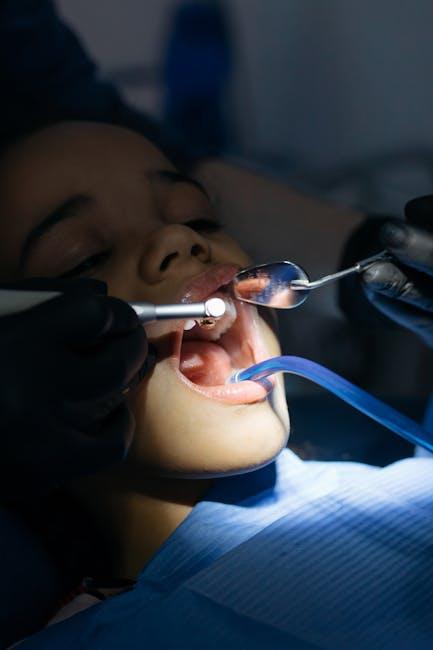1 in 3 Kids Has Dental Problems, Poll Finds – U.S. News & World Report
Dental health is an essential part of a child’s overall well-being, yet recent findings have uncovered a worrying trend. According to a recent poll reported by U.S. News & World Report, 1 in 3 kids in the United States suffers from dental problems. This statistic highlights the growing concern regarding pediatric oral health and underscores the need for greater awareness, prevention, and timely treatment.
In this article, we’ll explore the causes behind these dental issues, share practical tips for parents, and discuss the importance of dental care in kids. Whether you’re a parent, educator, or healthcare professional, this comprehensive guide will provide valuable insights to protect children’s smiles.
Understanding the Poll: What Dental Problems Affect Kids?
The poll surveyed parents nationwide and revealed that about 33% of children aged 2 to 12 experience dental problems ranging from cavities and tooth decay to gum disease and enamel erosion. These issues are typically chronic and untreated, contributing to pain, discomfort, and even impacting a child’s ability to eat, speak, and learn effectively.
Common Dental Issues in Children
- Tooth Decay (Cavities) – The most prevalent problem, caused by poor oral hygiene and sugary diets.
- Gum Disease – Inflammation and infection around the gums, sometimes leading to more severe periodontal problems.
- Enamel Erosion – Wearing down of the tooth’s protective surface, often due to acidic foods or medications.
- Tooth Sensitivity – Discomfort caused by exposed dentin or decayed areas.
- Orthodontic Issues – Misalignment that, if untreated, can complicate oral function and aesthetics.
Why Are So Many Children Facing Dental Problems?
The rising incidence of dental problems in kids can be attributed to several contributing factors:
- Poor Oral Hygiene Habits: Many children do not brush and floss regularly or correctly.
- High Sugar Intake: Frequent consumption of sugary snacks and drinks fuels bacteria that cause cavities.
- Limited Access to Dental Care: Socioeconomic barriers may prevent regular dental check-ups.
- Lack of Parental Awareness: Some parents may underestimate the importance of early oral care.
- Inadequate Fluoride Exposure: Insufficient fluoride can leave teeth more vulnerable to decay.
Potential Consequences of Untreated Dental Problems in Kids
Neglecting children’s dental health can have significant short- and long-term effects, including:
- Severe toothaches affecting concentration and sleep
- Infections that might spread and cause systemic health issues
- Difficulty eating, impacting nutrition and growth
- Speech development problems
- Low self-esteem linked to damaged or missing teeth
Practical Tips to Prevent Dental Problems in Kids
Prevention is key. Parents and caregivers can take proactive steps to ensure good dental health for their children:
- Establish Routine Brushing and Flossing: Encourage brushing twice a day with fluoride toothpaste and daily flossing.
- Limit Sugary Foods and Drinks: Reduce intake of sweets, sodas, and juice to minimize cavity risk.
- Schedule Regular Dental Visits: Begin dental check-ups by the child’s first birthday and maintain biannual appointments.
- Use Fluoride Products: Fluoride strengthens enamel and helps prevent decay. Consult your dentist for supplements if needed.
- Lead by Example: Let kids see parents maintaining good oral hygiene habits for motivation.
Quick Guide: Daily Oral Hygiene Routine for Kids
| Activity | How to Perform | Recommended Frequency |
|---|---|---|
| Brushing | Use a pea-sized amount of fluoride toothpaste and brush all surfaces of teeth gently | 2 times per day (morning & night) |
| Flossing | Carefully floss between each tooth to remove plaque and food particles | Once daily |
| Rinsing | Rinse mouth with water or fluoride mouthwash (age-appropriate) | After brushing or meals if possible |
Case Study: Positive Impact of Early Dental Care
Consider the example of Emma, a 7-year-old whose family adopted a comprehensive dental care routine after her first cavity at age 5. With regular dental visits, balanced nutrition, and consistent brushing habits, Emma has remained cavity-free for over two years and enjoys improved confidence and oral comfort. This story exemplifies how timely intervention and education can reverse worrying trends.
The Role of Schools and Communities in Promoting Child Dental Health
Community programs and school-based initiatives play a vital role in educating children and families about oral hygiene. Programs providing fluoride varnish applications, free dental screenings, and nutritious meal plans can help reduce the incidence of dental problems among children, especially in underserved populations.
Conclusion: Making Kids’ Dental Health a Priority
The headline statistic from U.S. News & World Report — that 1 in 3 kids has dental problems — is a wake-up call for parents, healthcare providers, and communities alike. Pediatric dental health should never be overlooked as it influences not only a child’s smile but their overall health, development, and quality of life.
By understanding the causes, consequences, and preventive steps, we can collectively work to reduce dental problems in kids. Remember, early education combined with routine dental care and healthy habits builds a strong foundation for lifelong oral health. Don’t wait — start prioritizing your child’s dental care today for a healthier tomorrow!


